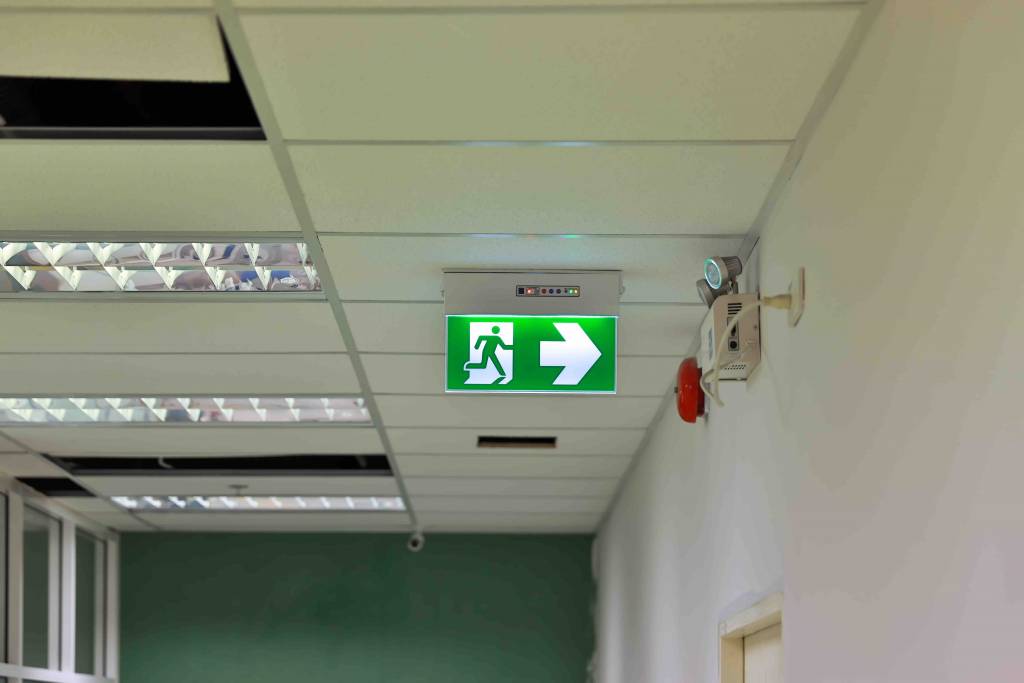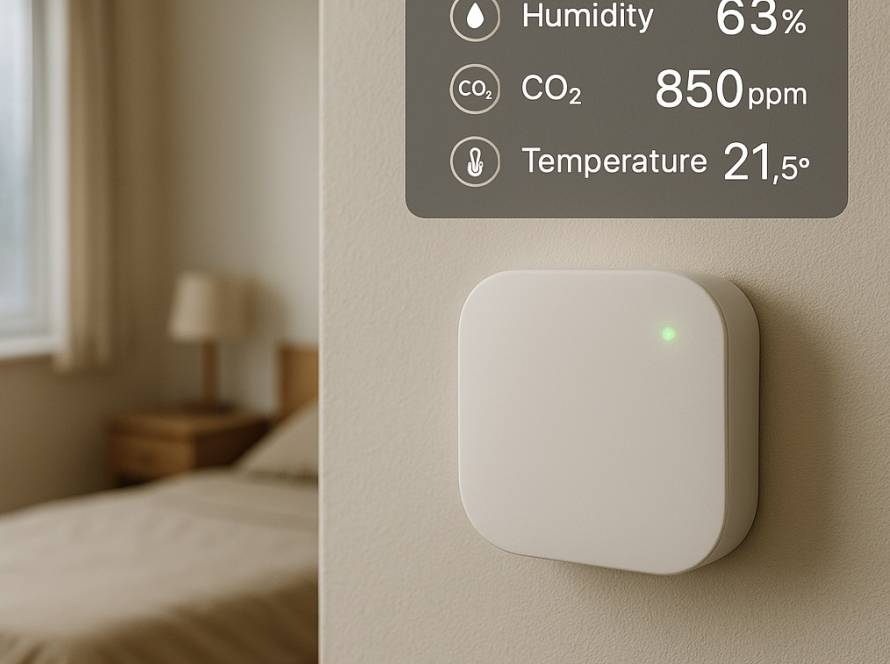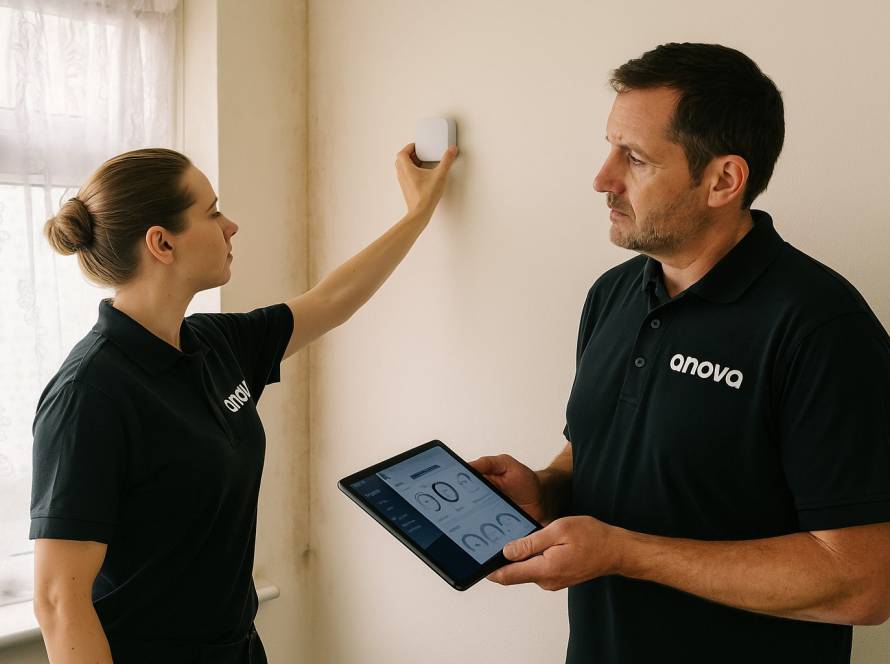Emergency lighting is a legal requirement under the Regulatory Reform (Fire Safety) Order 2005. Landlords, care homes, and HMO owners must perform regular monthly checks and full annual tests. Failing to comply can lead to prosecution, fines, or even invalidate insurance. Here’s how to stay compliant — and how Anova can help.
Introduction
In the event of a fire, power failure, or emergency evacuation, emergency lighting isn’t just helpful — it can be the difference between life and death.
Yet, thousands of commercial and multi-occupancy properties across the UK fail to meet even the most basic legal obligations for testing and maintaining their emergency lighting systems. For landlords, care home operators, and HMO owners, the cost of ignoring emergency lighting compliance can be staggering — both legally and financially.
This guide will explain what’s required, what’s often missed, and how Anova ensures you stay protected.


What is Emergency Lighting — and Why Does It Matter?
Emergency lighting is designed to automatically illuminate when normal lighting fails, ensuring safe evacuation routes are visible and accessible. This includes:
- Escape route lighting
- Open area (anti-panic) lighting
- High-risk task area lighting
It must function even during total mains failure, typically powered by battery backup systems built into each unit.
🧯 According to the UK’s Regulatory Reform (Fire Safety) Order 2005, the “responsible person” (often the landlord or business owner) must ensure that emergency routes and exits requiring illumination are provided with emergency lighting of adequate intensity.
Failure to comply is not just a safety risk — it’s a breach of law.
What the Law Requires (and When)
Emergency lighting is not a one-time installation job. The law requires ongoing testing and documentation. According to BS 5266-1 and industry best practice:
- Monthly Functional Checks:
A short-duration test to confirm the lights operate.
Should be visually checked for damage or signs of battery degradation.
- 6-Month Interim Test:
Performed by a qualified engineer. Lights should remain on for at least 1 hour.
- Annual Full Duration Test (3 hours):
Carried out by a competent person. Lights must operate for the full rated duration (usually 3 hours). Records must be kept.
“Emergency lighting systems shall be tested and maintained to ensure compliance and readiness for operation.”
– BS 5266-1:2016, Clause 12.4
These checks must be recorded in your fire safety logbook and made available for inspection.
Common Issues Found During Testing
At Anova, we often discover the same recurring problems during emergency lighting inspections:
- Dead or weak backup batteries
- Damaged or faulty emergency luminaires
- Lights not covering escape routes adequately
- Missing logbooks or incomplete documentation
- No records of monthly or annual testing
Many duty holders are unaware of their responsibilities, or assume it’s handled by someone else until it’s too late.

Real-World Consequences: A Care Home Fined
In 2022, a care home in Kent was fined over £200,000 after a routine inspection found multiple failings, including inadequate emergency lighting and missing documentation. The Fire and Rescue Service cited serious breaches of the Fire Safety Order — putting vulnerable residents at risk.
This case is not isolated. From HMOs in London to high street retailers, fire safety audits are increasingly common — and non-compliance carries criminal liability.
⚠️ Emergency lighting non-compliance can result in:
- Imprisonment for the responsible person in severe cases
- Unlimited fines
- Prosecution
- Insurance invalidation
Documentation Requirements
You must keep clear, up-to-date records of:
- Monthly functional checks (in-house or outsourced)
- Annual test results (carried out by a competent contractor)
- Remedial works or system upgrades
- A current fire safety logbook
These documents are often the first thing requested during a fire inspection or investigation.
📘 “A suitable record of maintenance must be kept available for inspection by enforcing authorities.”
– Regulatory Reform (Fire Safety) Order 2005, Article 17
Anova’s Emergency Lighting Solutions
Whether you’re managing a care home, commercial office, or HMO, Anova can help you stay compliant, safe, and fully documented.
We offer:
- Emergency lighting installation & upgrades
- Monthly functional checks
- 6-month and 12-month testing contracts
- Complete documentation and logbook management
- Fast remedial works and system corrections
- Clear explanations and support throughout the process
✅ We keep track of your test schedules and send reminders so you’ll never miss a deadline again.
Don’t Wait Until It’s Too Late
If your emergency lights haven’t been tested recently, or you’re unsure when they were last checked. Now is the time to act. Fire safety isn’t just a formality, it’s a legal obligation.
Anova’s proactive, professional service helps you stay on top of your responsibilities without the stress.
📞 Call: 02080516482
📩 Email: info@anovauk.com
💬 WhatsApp: Click the button below




